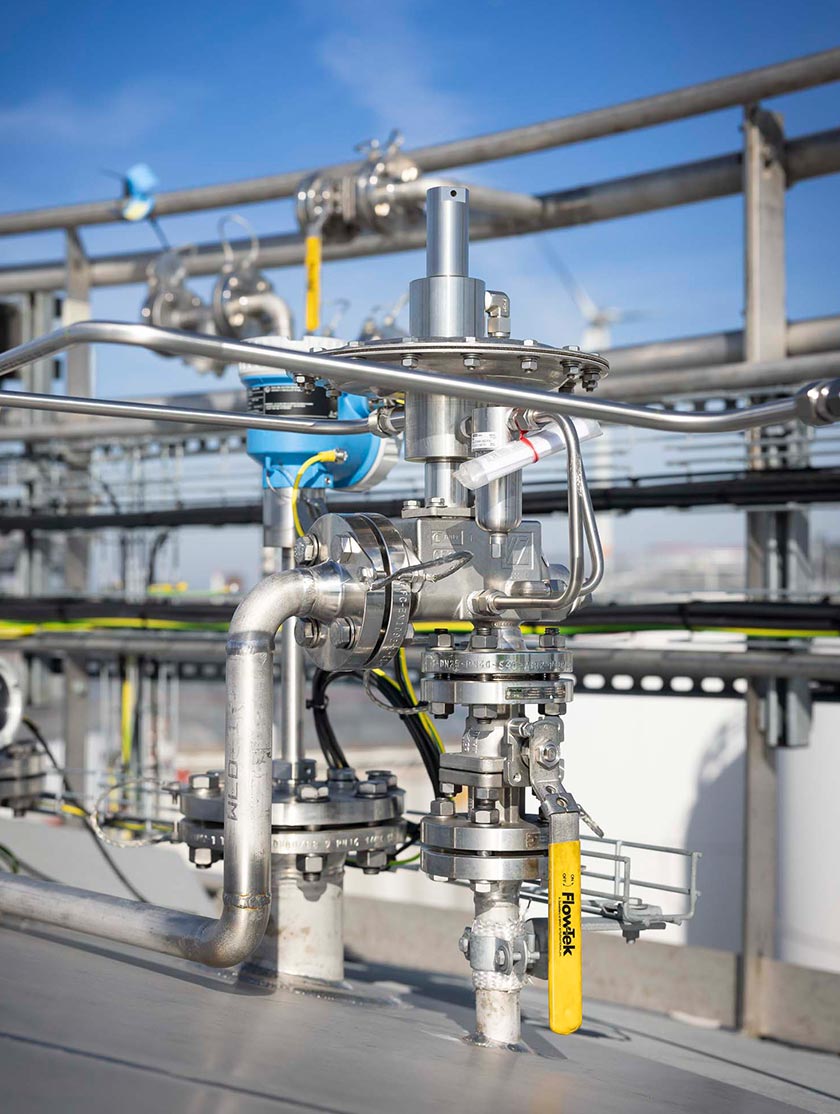What Are Pressure Reducing Regulators and How Do They Improve Industrial Safety?
What are pressure reducing regulators and why are they essential in industrial applications?
In various industrial environments, managing and regulating pressure in piping systems is critical to ensure safety, optimize performance, and protect equipment. One of the most important components to achieve this control is the pressure reducing regulator. This device plays a vital role in maintaining stable and safe pressure levels downstream of the high-pressure source.
What is a pressure reducing regulator?
A pressure reducing regulator (PRR) is a mechanical device designed to automatically reduce a higher inlet pressure to a lower, constant outlet pressure, regardless of fluctuations in upstream supply or downstream demand. It essentially functions as a control valve that regulates its internal mechanism to maintain the desired outlet pressure.
A pressure reducing regulator typically consists of:
- An inlet port that receives the pressurized fluid (gas or liquid).
- A valve that modulates the flow based on pressure.
- A sensing element, usually a diaphragm or piston, that responds to changes in downstream pressure.
- An adjustable spring mechanism that sets the desired outlet pressure.
When the downstream pressure drops below the set point, the valve opens to allow more fluid to flow; when the pressure reaches the set limit, the valve closes to restrict flow, maintaining a constant pressure as long as the inlet pressure is sufficient.
Why are pressure reducing regulators essential in industrial applications?
- Ensuring Safety
Industrial processes often involve the handling of gases and liquids under high pressure. Without pressure reducing regulators, excessive pressure can cause pipes to burst, equipment to become damaged, or dangerous leaks to occur. Pressure reducing regulators mitigate these risks by preventing excessive pressure, protecting both personnel and infrastructure. - Process Stability and Consistency
Many industrial processes require precise pressure control to maintain product quality and process efficiency. Pressure fluctuations can cause changes in flow rate, temperature changes, or inconsistent chemical reactions. Pressure reducing regulators ensure stable operation by delivering consistent pressure, improving overall process control. - Equipment Protection and Durability
Sensitive equipment such as pumps, compressors, meters, and valves have maximum allowable pressure limits. Exposure to pressures that exceed specifications will shorten equipment life or cause equipment failure. By keeping pressure within safe limits, pressure reducing regulators reduce wear, minimizing downtime and repair costs. - Energy Optimization
Efficient pressure control helps eliminate unnecessary energy consumption. Maintaining high pressure requires more energy and can cause inefficiencies in downstream processes. Pressure reducing regulators reduce pressure to an optimal level, saving energy and reducing costs. - Regulatory Compliance
Many industries are subject to strict regulations regarding the operation of pressure vessels and piping systems. Proper pressure control, often required by safety standards and regulations, is achieved using devices such as pressure reducing regulators to ensure compliance and avoid legal liability.
Typical Industrial Applications for Pressure Reducing Regulators
- Steam Distribution Systems: To reduce steam pressure for use in heating or process applications without damaging equipment.
- Compressed Air Systems: To supply tools and machinery with constant air pressure.
- Gas Supply Systems: In natural gas or other gaseous fuel lines, to provide safe pressure delivery to burners or engines.
- Water Treatment Plants: To maintain pressure levels suitable for filtration and chemical dosing systems.
- Chemical Processing: To protect reactors and pipelines from high pressures that could lead to hazardous incidents.
Conclusions
Pressure reducing regulators are essential components of industrial pressure management systems. By providing reliable, consistent pressure control, they increase safety, improve process reliability, extend equipment life and support regulatory compliance. For all industrial operations using pressure-driven fluids, the use of correctly specified and maintained pressure reducing regulators is essential for operational excellence and risk reduction.
Need the Right Pressure Reducing Regulator? Get Expert Help Selecting the Ideal Regulator Engineered for Performance |
Cashco’s pressure reducing regulators are designed for precise pressure control across a wide range of industrial applications—delivering reliability, safety, and efficiency. For more information about Cashco's regulators, view all models here .
Cashco is dedicated to ensuring you select the best solution for your tank protection needs. Need help choosing the right pressure reducing regulator? Contact us and our experienced team will gladly assist you in finding the ideal product!
Animated Guide: Pressure Reducing Regulator Function |
Discover the workings of a pressure reducing regulator in our animation video. Using the force-balance principle, this device reduces and maintains downstream pressure in a pipeline. Watch as we demonstrate how the regulator’s diaphragm and valve assembly create resistance to reduce upstream pressure. Learn how downstream flow demands impact the regulator, causing it to adjust and maintain a constant pressure.



